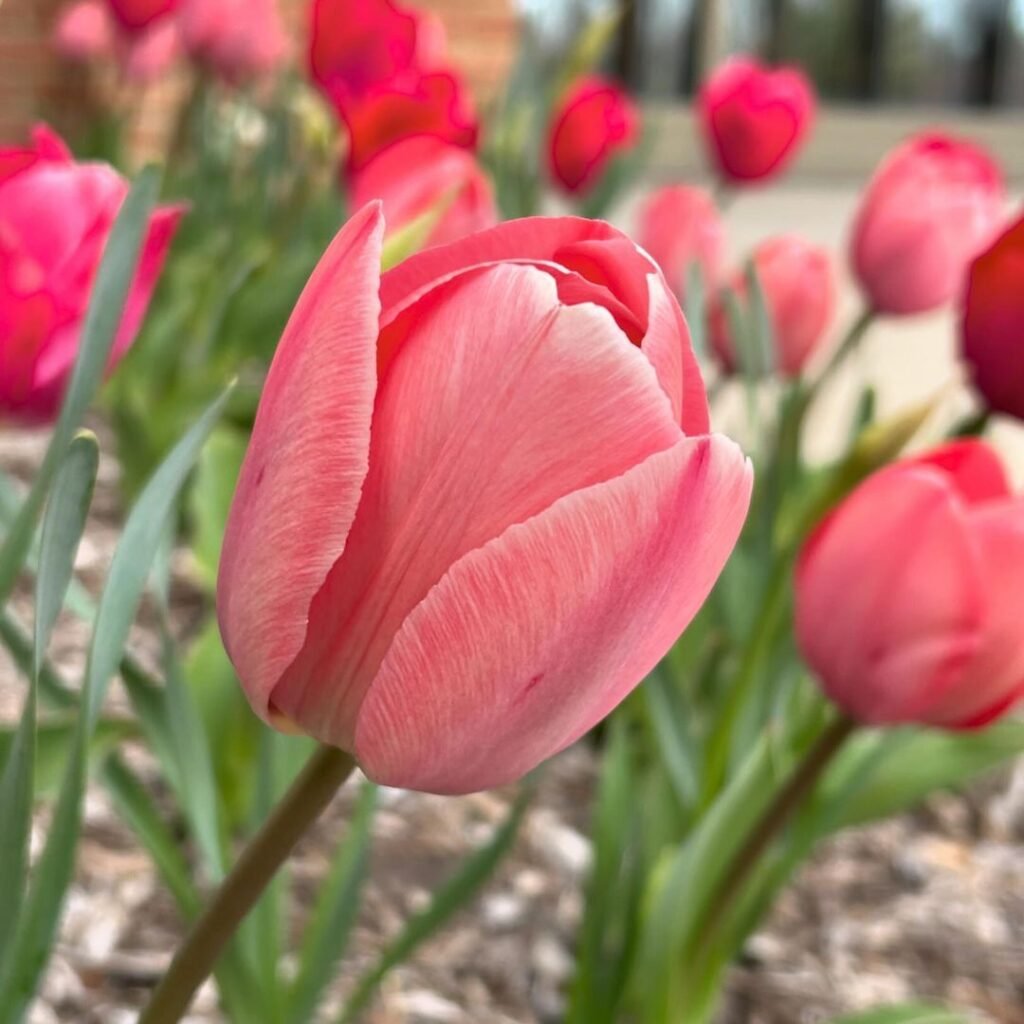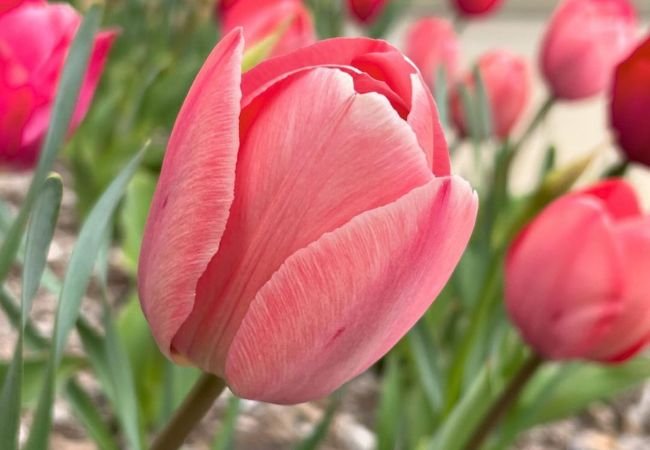Discover how to cultivate stunning pink tulips in your garden. Learn expert tips on planting, care, and popular varieties. Perfect for gardeners seeking to add a touch of romance to their spring landscape.
Pink tulips are elegant spring-flowering bulbs that range in hue from pale blush to deep magenta. They thrive in well-draining soil and full sun to partial shade. Plant bulbs in fall, 4-6 inches deep and 4-6 inches apart, for spring blooms. Popular pink varieties include ‘Angelique’, ‘Pink Impression’ and ‘Foxtrot’.
As a horticultural expert with over two decades of experience in cultivating spring bulbs, I’m thrilled to share my knowledge about growing and caring for pink tulips. These charming flowers can add a soft, romantic touch to any garden, balcony or indoor space.
Understanding Pink Tulips

Pink tulips belong to the genus Tulipa and are part of the lily family (Liliaceae). They symbolize care, affection, and good wishes, making them popular for both garden displays and cut flower arrangements.
For more on flower symbolism, visit the University of Illinois Extension’s Flower Meanings page.
Popular Pink Tulip Varieties
- ‘Angelique’: A fragrant, peony-flowered double tulip with soft pink petals
- ‘Pink Impression’: A Darwin Hybrid with large, vivid pink blooms
- ‘Foxtrot’: An early-flowering double tulip with pale pink flowers
- ‘Marilyn’: A lily-flowered tulip with white petals edged in rose-pink
- ‘Don Quichotte’: A triumph tulip with deep pink, egg-shaped flowers
For an extensive list of tulip varieties, check the Royal Horticultural Society’s tulip database.
Planting Pink Tulips
Timing
Plant pink tulip bulbs in the fall, typically 6-8 weeks before the ground freezes. This allows roots to establish before winter dormancy.
Location Selection
Choose a spot with:
- Full sun to partial shade (at least 6 hours of direct sunlight daily)
- Well-draining soil to prevent bulb rot
- Protection from strong winds
Soil Preparation
Prepare the soil by:
- Loosening it to a depth of about 12-15 inches
- Incorporating organic matter like compost to improve drainage and nutrients
- Ensuring the soil pH is between 6.0 and 7.0
For more on soil preparation, visit Cornell University’s Gardening Resources.
Planting Process
- Dig holes 4-6 inches deep and 4-6 inches apart
- Place bulbs with the pointy end facing up
- Cover with soil and water thoroughly
- Apply a layer of mulch for winter protection
Caring for Pink Tulips
Watering
- Water deeply after planting
- In spring, water moderately when the top inch of soil feels dry
- Avoid overwatering, which can lead to bulb rot
Fertilizing
- Apply a balanced, low-nitrogen bulb fertilizer during fall planting
- Fertilize again in early spring when shoots emerge
- Avoid high-nitrogen fertilizers, which can promote foliage growth at the expense of blooms
For more on fertilizing bulbs, see Washington State University’s guide.
Post-Bloom Care
- Allow foliage to die back naturally to replenish bulb nutrients
- Deadhead spent flowers to prevent seed formation
- Consider lifting and storing bulbs in warmer climates where winters are mild
Pest and Disease Management
Common issues include:
- Bulb rot: Ensure good drainage and avoid overwatering
- Tulip fire: Remove and destroy infected plants, practice crop rotation
- Aphids and slugs: Use appropriate organic or chemical controls as needed
For more information on tulip diseases, visit Michigan State University’s Extension page.
Using Pink Tulips in the Garden
Landscape Design Ideas
- Create romantic border displays
- Plant in large drifts for a bold impact
- Combine with other spring bulbs for a layered effect
- Use in container gardens for portable spring color
Companion Planting
Enhance your pink tulip display by pairing them with:
- White flowers like daffodils or hyacinths for contrast
- Blue flowers like muscari or forget-me-nots for a complementary color scheme
- Early-blooming perennials like hellebores or primroses
For more on companion planting, check out The Old Farmer’s Almanac guide.
Growing pink tulips can bring a touch of elegance and romance to your spring garden. With proper planting, care and attention to their needs, these delightful blooms will reward you with stunning displays year after year. Remember, success lies in well-draining soil, proper planting depth and allowing the foliage to die back naturally after blooming. Whether you’re an experienced gardener or a beginner, pink tulips are a charming addition to any garden palette.
For more comprehensive information on tulip cultivation, visit the International Flower Bulb Centre.
For more gardening tips and plant care guides, visit usagardenhub.com.

